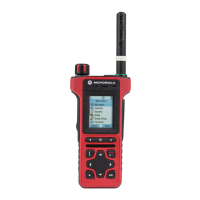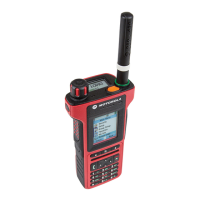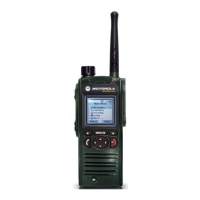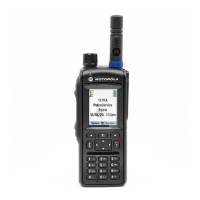Mobility Services 2-33
March 2009 Chapter 2 - MTP850 Ex/MTP810 Ex Product Information Manual 6866588D21-D
Upon camping on a cell, the terminal will send a registration request PDU to the SwMI, which
includes a request to attach to the terminal’s selected group. If the registration and attachment
succeeded, the terminal will begin normal operation on the cell.
If the registration attempt times out, or the registration is rejected by the SwMI for a temporary
reason, another registration attempt should be made. If this fails as well, the terminal will attempt to
camp on a different cell.
If the registration is rejected by the SwMI with a rejection cause that indicates that the terminal
cannot operate in this system, and there are other systems in the terminals MNI list, the terminal will
attempt to find a cell that has a different MNI than the rejected system.
If the registration request is denied by the SwMI due to Location Area Rejection, the terminal will not
attempt to register again at that cell until the next power on.
The terminal supports the modification of its subscriber class upon receipt of a new subscriber class
from the SwMI in the registration acknowledgement PDU. This subscriber class will be used until
power down or next ITSI attach, it is not saved in non-volatile memory.
10.4 Roaming
The terminal will continually monitor neighbour cells and will background scan the highest ranked
neighbour cell. When the state of the highest ranked neighbour cell is sufficiently better than the
serving cell, or when the terminal has totally lost the serving cell, the terminal will employ cell
reselection procedures employing the following methods as described in [Ref 1] clause 18.3.4.7.1
1. If not in a call:
• Undeclared Cell reselection
2. If in a call and not transmitting or link failure occurs:
• Unannounced Cell-reselection
3. If transmitting in a call, and a neighbor has been scanned, and the cells are synchronized:
• Announced Type-2 cell reselection
4. If transmitting in a call and no neighbor has been scanned or the cells are not synchronized:
• Announced Type-3 cell reselection
For compatibility with systems that do not support an appropriate TETRA signalling containing a cell
ID parameter, the terminal can be provisioned to never perform Type 2 cell reselection.
The terminal will decide the need for cell reselection, based on comparison of the signal strength
and the service level between the serving cell and neighbour cells. The service level criteria shall be
based on the following criteria which are listed in priority order:
• System Wide Services available (Local/Wide Trunking)
• Security Class
• Subscriber Class
• Location Area (Home Location area)
• Cell Load
The terminal will always prefer a cell that has a higher service level to one with a lower service level.
If the terminal is operating on a serving cell that has a lower service level than a neighbour cell, the
terminal will roam to the neighbour, even during a call.
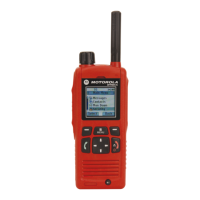
